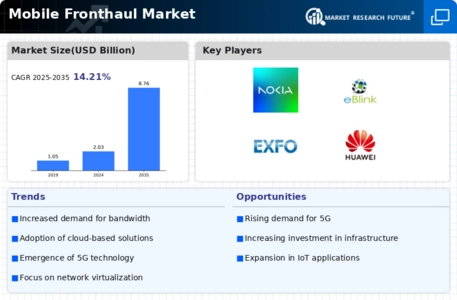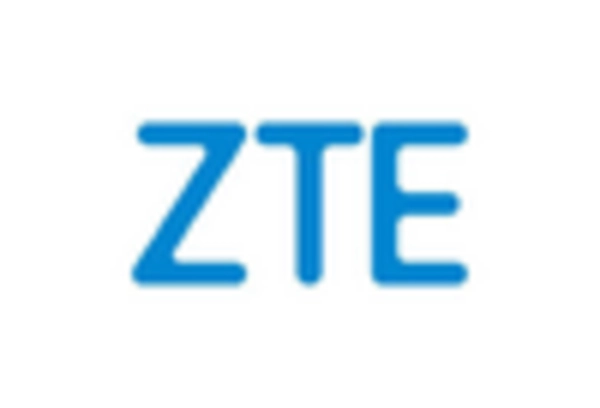Leading market players are investing heavily in research and development to expand their product lines, which will help the mobile fronthaul market grow even more. Market participants are also undertaking various strategic activities to expand their footprint, with important market developments including new product launches, contractual agreements, mergers and acquisitions, higher investments, and collaboration with other organizations. To expand and survive in a more competitive and rising market climate, the mobile fronthaul industry must offer cost-effective items.
Manufacturing locally to minimize operational costs is one of the key business tactics manufacturers use in the mobile fronthaul industry to benefit clients and increase the market sector. In recent years, the mobile fronthaul industry has offered some of the most significant advantages to the telecommunication industry. Major players in the mobile fronthaul market, including Accelink Technologies (America),MACOM Technologies (America),Nokia (Finland),E-Blink (France),EXFO (China),HUAWEI (China), and others, are attempting to increase market demand by investing in research and development operations.
Huawei Technologies Co., Ltd. is a Chinese multinational technology corporation headquartered in Shenzhen, Guangdong province that designs, develops, manufactures, and sells telecommunications equipment, consumer electronics, smart devices, and various rooftop solar power products. Huawei Technologies Co, Ltd. was instrumental in helping China Mobile Tianjin launch the 4.5G/5G C-RAN mobile fronthaul bearer network. Many Chinese telecom networks and companies like China Telecom Liaoning, China Mobile Qingdao, China Telecom Tianjin, China Telecom Guizhou, China Unicom Liaoning, and China Mobile Tianjin have used Huawei FO 810 technologies in their networks.
This has been instrumental in helping them with two objectives: meeting their C-RAN fronthaul requirements and fully supporting their wireless coverages.
Nokia Corporation is a Finnish multinational telecommunications, information technology, and consumer Electronics Corporation established in 1865. Nokia's main headquarters are in Espoo, Finland, in the greater Helsinki metropolitan area, but the company's actual roots are in the Tampere region of Pirkanmaa. Nokia Corporation formally announced using new WDM modules to expand its mobile fronthaul market share with new mobile fronthaul solutions. Network operators are expected to be the main beneficiaries of this development. One of the main things it will do is help these operators speed up the adoption and usage of RAN architecture in their daily operations.
One main benefit will help the growing numbers of people who want to stream and download HD videos easily and quickly from mobile devices.


















Leave a Comment